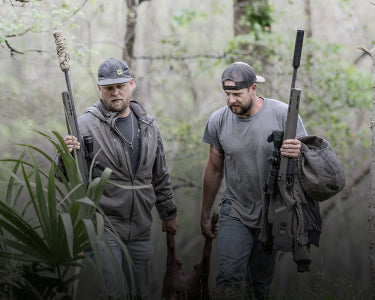
If you don’t have a good spot on opening weekend, your chances of success exponentially decrease with each day that passes. Doves respond to hunting pressure and because opening weekend is crowded and the bag limit is high comparingly to other wing hunting, it is inevitable that dove hunting becomes increasingly challenging.
That is why it is so important to scan your spots a week or two before September 1.
There is no guarantee that last year’s honey hole, especially if it isn’t yours, will still be the sweet spot. Watering holes dry up, farmers switch or don’t plant crops—they may not have cut their field yet, land development and plenty of other factors affect doves’ feeding, watering and roosting grounds.
Typically, dove hunting doesn’t require as much preparation as deer hunting does. Most dove hunters wear drab colors, pack up a chair, ammo and a shotgun and post up in the nearest open field. Even though doves are the most bountiful bird in North America, you still run the risk of not hitting your limit that first day—especially if you haven’t done your homework.
You’re more likely to be successful if you approach your dove hunt like you do deer. An essential step is scouting.
All you need to scout and scan for this year’s dove field is a car, time and some good binoculars.
Finding the Best Dove Field
Doves eat anywhere from 14 to 20 percent of their weight a day. Seeds are their primary diet. They prefer open grain fields, freshly harvested—wheat, barley, corn and sunflower fields are prime feeding grounds. These grain fields edged with tall, sparse dead trees or power lines are where you will find the perch sights doves like. Scan for these entry and exit points because doves use these outlying trees to watch the fields for predators before flying in to feed.
Watering Holes

Doves typically fly into a water source at least once a day, usually in the evening right before roosting. Like their feeding ground, doves prefer a flat area with a place nearby to perch and watch before committing to flying in to drink.
Cattle ponds should be easy to find, and the vegetation will already be stomped down. Look for ponds with low banks and sandy areas where it is easy for doves to land and keep watch.
Timing
The best time to hunt doves is early morning and right before dusk. However, since this is known to seasoned dove hunters, the fields will empty out from late morning/lunch to mid-afternoon. During this time, you probably won’t have flocks flying in, you’ll spot singles and pairs without the competition of other hunters. If the doves are flying slow, don’t be discouraged. Wait it out. They’ll come back—especially if you’ve already scouted the location.
When scouting, go at the same time you plan to hunt. This will ensure you have an adequate understanding of when and where the doves are flying and their different flight patterns.
What Not to Do
Avoid public, popular fields and sneak off to lesser-known, out-of-the-way places. When doves feel pressure from one field, they will push out to other fields. Public hunting land will fill up fast opening weekend. Don’t be afraid to knock on doors, become friendly with farmers and ask for permission to hunt on private land.
There is still plenty of time left to scout out the perfect spots. Don’t forget to clean your shotgun and check to make sure your license is current.




